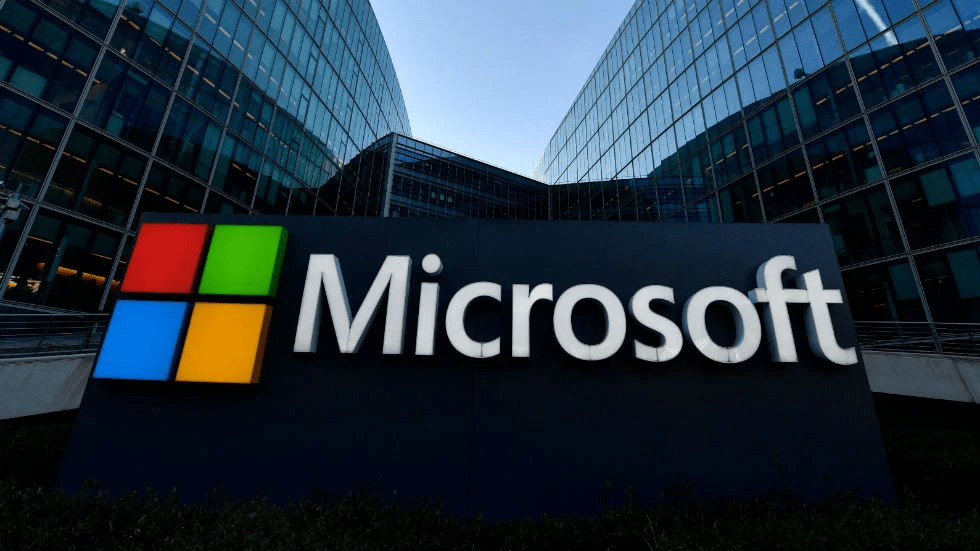Tech
Samsung brings tech’s latest fashion to wearable technology with AI twists in new watch and ring

SAN FRANCISCO (AP) — Samsung is dressing up its wearable devices in technology’s latest fashion — artificial intelligence.
The South Korean electronics giant on Wednesday revealed that both its first-ever premium smartwatch and a smart ring heralding its entry into a niche market will include AI features that are supposed to help people monitor and manage their health.
Both the Galaxy Watch Ultra, priced at $650, and the Galaxy Ring, priced at $400, are extensions of a push that Samsung launched six months ago when it introduced its first smartphones to feature AI technology as a main attraction. The high-end smartwatch costs twice as much as Samsung’s latest standard model, the Galaxy Watch 7, which will sell for $300.
Tethering AI to people’s essential devices has become an accelerating trend. The technology already has been implanted on smartphones made by Google and Apple that compete against Samsung and also on the latest personal computers powered by Microsoft’s Windows software.
The AI deployment on Samsung’s new premium watch and ring is narrowly focused on improving and maintaining personal health — the main reason most people buy wearable technology.
Both Samsung’s watch and ring are leaning on AI to do a better job of analyzing biometric data collected from the person wearing the devices to customize assessments of their well-being through an “energy score” that will deliver ratings on a one to 100 scale and also make recommendations like a virtual fitness coach.
Just as Apple plans to do with its AI services, Samsung’s new wearable products will collect most sensitive information on the devices themselves. But some data will still be processed through remote computing centers with a “defense-grade, multi-layer security platform” that Samsung likens to a virtual Fort Knox, echoing Apple’s pledge to corral any personal information that must be processed off a device in a digital fortress. But those promises don’t necessarily guarantee there won’t ever be security breaches or other breakdowns that unintentionally exposes personal information to outsiders.
Samsung’s premium phone is the more sophisticated of its latest wearable devices, capable of performing some functions — such as flagging sleep apnea — that the Galaxy Ring can’t. However, the ring requires less frequent recharging, equipped with a battery that can last six to seven days before needing to be replenished.
But the smartwatch is also in a much more crowded market currently led by Apple, which has been intensifying its focus on health features since entering the market a decade ago. More than 60 million people already use the Samsung Health app that works in tandem with its smartwatches.
The health benefits associated with wearable technology have helped spur more people to buy smartwatches, with worldwide sales of the devices expected to approach about $29 billion this year, based on a forecast by the research firm Gartner Inc. That translates to roughly 164 million new smartwatches being worn on wrists this year, with Gartner predicting the annual sales volume sold will rise to 195 million in 2028.
Samsung is likely to face more challenges in the smart ring market, even though it won’t be facing much competition so far. The segment so far has been shaped by startups such as Oura and RingConn that haven’t made a significant dent so far.
“Smart rings are still an emerging category with no exclusive use cases, with little expectations of growing beyond a niche market” through 2028, Gartner said in its recent overview of the wearable technology market.
The firm expects a small segment that includes smart rings to generate $2.4 billion in sales this year and eventually rise to about $4.6 billion in 2028.
Although it will come in nine different sizes, Samsung’s Galaxy Ring only fits with one kind of software — Google’s Android operating system. That locks out the mostly affluent consumers who own iPhones and often are interested in checking out new forms of technology such as the Galaxy Ring.
Samsung also is rolling out its latest attempt to lure more people into buying a foldable phone equipped with two display screens that can be hinged together so the device can be turned into a pseudo-tablet. It’s a concept that Samsung has pushing since 2019 with minimal success, but the company is continuing to update the device with camera and AI features to feed the niche market. The next-generation model, the Galaxy Z Fold 6, will sell for $1,900.
Meanwhile, unionized workers in South Korea declared an indefinite strike to pressure Samsung to accept their calls for higher pays and other benefits. Thousands of members of the National Samsung Electronics Union launched a temporary, three-day strike on Monday. But the union said Wednesday that it was announcing an indefinite strike, accusing the management of being unwilling to negotiate.
Samsung claims there have been no disruptions to production.

Tech
Google Unveils AI-Powered Pixel 9 Lineup Ahead of Apple’s iPhone 16 Release
Google has launched its next generation of Pixel phones, setting the stage for a head-to-head competition with Apple as both tech giants aim to integrate more advanced artificial intelligence (AI) features into their flagship devices. The unveiling took place near Google’s Mountain View headquarters, marking an early debut for the Pixel 9 lineup, which is designed to showcase the latest advancements in AI technology.
The Pixel 9 series, although a minor player in global smartphone sales, is a crucial platform for Google to demonstrate the cutting-edge capabilities of its Android operating system. With AI at the core of its strategy, Google is positioning the Pixel 9 phones as vessels for the transformative potential of AI, a trend that is expected to revolutionize the way people interact with technology.
Rick Osterloh, Google’s senior vice president overseeing the Pixel phones, emphasized the company’s commitment to AI, stating, “We are obsessed with the idea that AI can make life easier and more productive for people.” This echoes the narrative Apple is likely to push when it unveils its iPhone 16, which is also expected to feature advanced AI capabilities.
The Pixel 9 lineup will be the first to fully integrate Google’s Gemini AI technology, designed to enhance user experience through more natural, conversational interactions. The Gemini assistant, which features 10 different human-like voices, can perform a wide array of tasks, particularly if users allow access to their emails and documents.
In an on-stage demonstration, the Gemini assistant showcased its ability to generate creative ideas and even analyze images, although it did experience some hiccups when asked to identify a concert poster for singer Sabrina Carpenter.
To support these AI-driven features, Google has equipped the Pixel 9 with a special chip that enables many AI processes to be handled directly on the device. This not only improves performance but also enhances user privacy and security by reducing the need to send data to remote servers.
Google’s aggressive push into AI with the Pixel 9 comes as Apple prepares to unveil its iPhone 16, which is expected to feature its own AI advancements. However, Google’s decision to offer a one-year free subscription to its advanced Gemini Assistant, valued at $240, may pressure Apple to reconsider any plans to charge for its AI services.
The standard Pixel 9 will be priced at $800, a $100 increase from last year, while the Pixel 9 Pro will range between $1,000 and $1,100, depending on the model. Google also announced the next iteration of its foldable Pixel phone, priced at $1,800.
In addition to the new Pixel phones, Google also revealed updates to its Pixel Watch and wireless earbuds, directly challenging Apple’s dominance in the wearable tech market. These products, like the Pixel 9, are designed to integrate seamlessly with Google’s AI-driven ecosystem.
Google’s event took place against the backdrop of a significant legal challenge, with a judge recently ruling that its search engine constitutes an illegal monopoly. This ruling could lead to further court proceedings that may force Google to make significant changes to its business practices, potentially impacting its Android software or other key components of its $2 trillion empire.
Despite these legal hurdles, Google is pressing forward with its vision of an AI-powered future, using its latest devices to showcase what it believes will be the next big leap in technology. As the battle for AI supremacy heats up, consumers can expect both Google and Apple to push the boundaries of what their devices can do, making the choice between them more compelling than ever.
News
Microsoft Outage Hits Payment Processors

When major payment processing systems have problems, the issues impact many critical systems that society depends on. In this article, we’ll explain the cause of the Microsoft outage and discuss the impact computer networking issues had on Canada. We’ll also examine whether or not Microsoft was at fault and what businesses can do to prevent further outages.
What Happened With the Microsoft Outage?
The outage with Microsoft’s Azure payment processor resulted from a buggy security update from an outside company, CrowdStrike. CrowdStrike offers information technology security services for many Microsoft Windows computers. The company’s software developers sent a new update out, but instead of patching up minor issues with the existing software, the code within conflicted with Windows and prevented computers from booting up. Users expecting to start their computers for a typical day were instead faced with the dreaded “Blue Screen of Death” error message.
So, how does this produce a problem and a payment processor issue? Many computers running payment processing, among many other kinds of software used for airlines, banks, retail, and other essential services, couldn’t start and were unable to let payments through. This is a catastrophic issue for companies that are heavily reliant upon the speed and ease of an electronic transaction.
In Canada, the outage impacted critical computer systems for air travel. Flights couldn’t be paid for and booked, which caused major problems for customers unable to make transactions while flights remained grounded. Travellers stuck waiting for flights to take off made their way over to the airports’ Starbucks and other vendors, only to discover unusually long lines due to payment issues. Even online gamblers looking to take their minds off the situation couldn’t take full advantage of one of the fastest payment options out there because of the outage.
Aside from payments, hospitals for major health systems had to use paper to complete important tasks like ordering lab work and getting meals to patients. Emergency dispatch lines were temporarily unable to function correctly while their computer systems were down.
How Was the Outage Fixed?
Thankfully, CrowdStrike fixed the problem on their end quickly, mostly via an additional reboot that allowed CrowdStrike to send over unflawed code. Unfortunately, for some business and private customers, rebooting wouldn’t be enough with command-line level adjustments needed for the operating system to run correctly.
The Good and Bad of Outages
First, we’re thankful that the outage was not caused by hackers accessing and stealing a mountain of personal data. A recent outage with an automotive software provider went on for much longer and ended much worse for software provider CDK, which likely paid an undisclosed sum north of $20 million to get data back and systems restored.
By some chance, Microsoft is reported to have experienced its own outage, and many information technology professionals blame Microsoft in part for their issues because of how their systems attempted to fix the problem by rebooting over and over again, though some of Microsoft’s PCs needed to warn users to make a change manually. Unfortunately, any computer that required manual intervention took longer to recover, as a knowledgeable person had to access each computer affected by the issue. In some cases, between dealing with several hours of backlogged tasks and slow recovery processes, some businesses took days, not hours, to get back online.
The outage brings up another major point in the cybersecurity and computer industry. CrowdStrike and Microsoft are both big companies in their respective fields. As a result, the effects of bad code spread much further than they could have if there were more competitors making security products or if there were more software companies making operating systems like Windows. While only 8 million computers were believed to be affected out of a much larger global network, those are essential computers for worldwide communication and payment processing. Perhaps companies should be putting their eggs in more than one basket?
The testing methods for the outage are unclear—did CrowdStrike test the routine software update enough to detect the potential for a major outage? Apparently not.
What Should Businesses Do Next?
Software like Microsoft Azure’s payment systems come from what information technology professionals call ‘the cloud.’ The software is remotely managed over the internet, meaning that the computer that runs the system is not physically present at the location. Unfortunately, this also means that an issue with the internet can take critical systems out of service.
Businesses ranging from major airlines and banks to mom-and-pop stores would be well served by backup systems at their locations. These don’t have to be as primitive as the old-fashioned credit-card carbon-copy slide, but there are options available with consistent service that don’t repeatedly rely on the same networks.
Conclusion
There were certainly challenging moments for Canadian businesses and emergency services during the CrowdStrike and Microsoft outage. As they scrambled to understand the problem and waited, albeit briefly, for issues to resolve, many companies learned the importance of having local and reliable backup for their computer systems.
Tech
New photos reveal more details about Google’s Pixel 9 Pro Fold

Google’s secret new line of Pixel 9 phones isn’t that big of a secret anymore. Taiwan’s National Communications Commission (NCC) released new photos of the phones including the Pixel 9 Pro Fold from almost every conceivable angle.
Android Authority found the photos in the NCC archives and uploaded galleries of each of the four phones including the Pixel 9, 9 Pro, 9 Pro XL and 9 Pro Fold. They reveal some interesting details about the new Pixel phones.
The charging rates will be a little faster than the last generation of Pixel phones: Taiwanese authorities measured 24.12W for the base model, 25.20W for the Pro and 32.67W for the 9 Pro XL. The Pixel 9 Pro Fold, however, was the slowest of all of them at 20.25W. These numbers don’t often match up perfectly with the advertised ratings, so expect Google to be promoting higher numbers at its event.
Speaking of chargers, it looks like Google needed a bigger charger to power its new phones. Photos included in the NCC leak show each phone will come with a wall charger that’s around 45W depending on which model you purchase. The charger’s plug moved from the middle to the top of the brick.
The latest photo dump also shows the 9 Pro Fold unfolded for the first time. Google has moved the selfie camera to the inside screen for a wider field of view. The 9 Pro Fold also has a slimmer top and bottom, a reduced fold crease on the display and a full 180 degree unfolding angle to make a screen that’s just over 250mm or just under 10 inches.
These photos are the latest in a very long list of leaks of Google Pixel 9 photos. The last Pixel 9 leak came down yesterday showing two prototype models of the base and XL models. Google might look into buying a new combination lock for the high school locker where they apparently keep all their unreleased gear.

-

 News22 hours ago
News22 hours agoRail companies, union resume talks as lockout shuts down both major railways
-

 News23 hours ago
News23 hours agoAir Canada pilots authorize strike for as soon as next month
-

 Sports19 hours ago
Sports19 hours agoPenguins Acquire Rutger McGroarty from Jets in Exchange for Brayden Yager
-
Business8 hours ago
Canada moves to end rail shutdown quickly; CN, CPKC prepare to resume services
-

 News13 hours ago
News13 hours agoKeegan Bradley goes from last man in to leading BMW Championship
-

 News22 hours ago
News22 hours agoPickup truck hits and kills escaped horse in eastern P.E.I., police say
-
News23 hours ago
NATIONAL RAIL SHUT DOWN: SMALL BUSINESSES SAW IT COMING
-

 News23 hours ago
News23 hours agoHome-sharing platform funded by N.S. government results in just 23 leases in a year

















